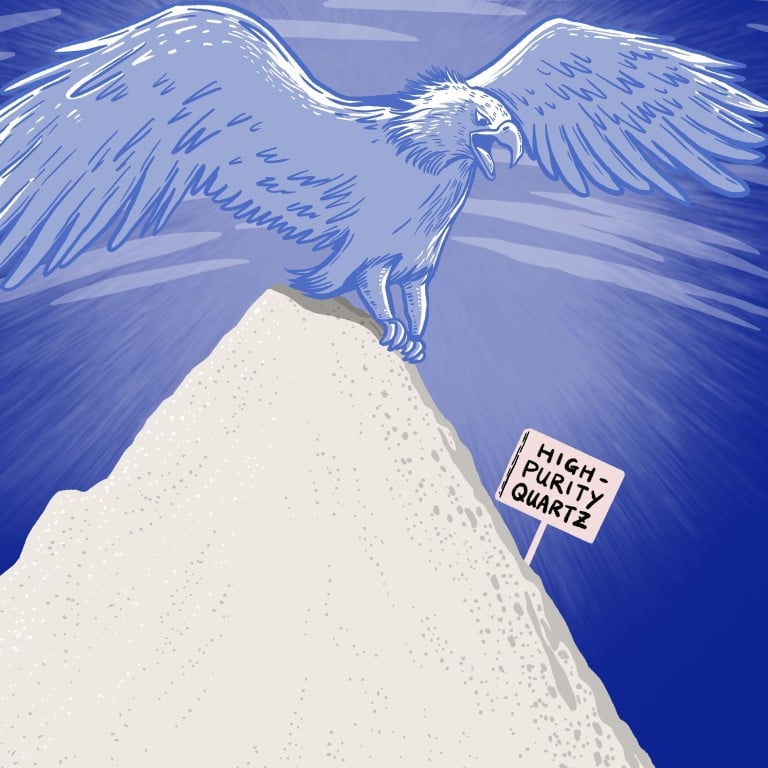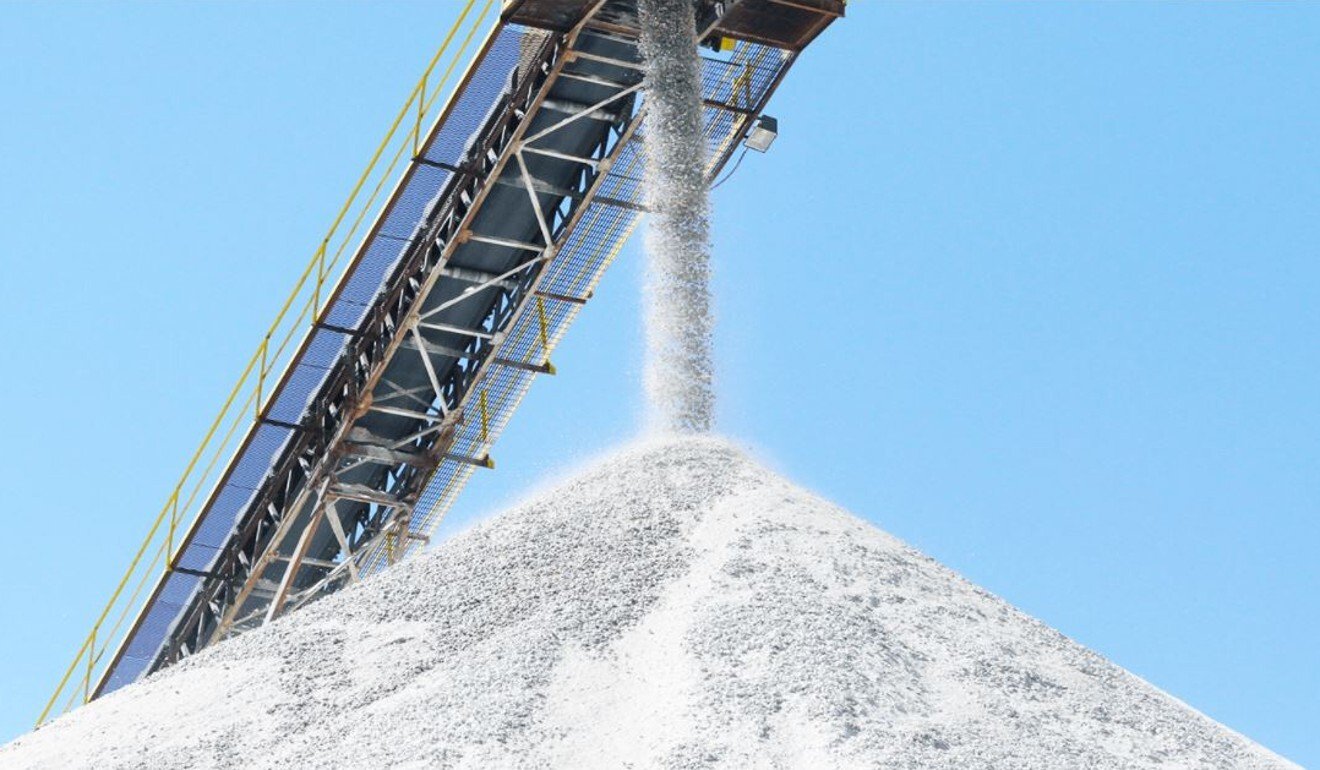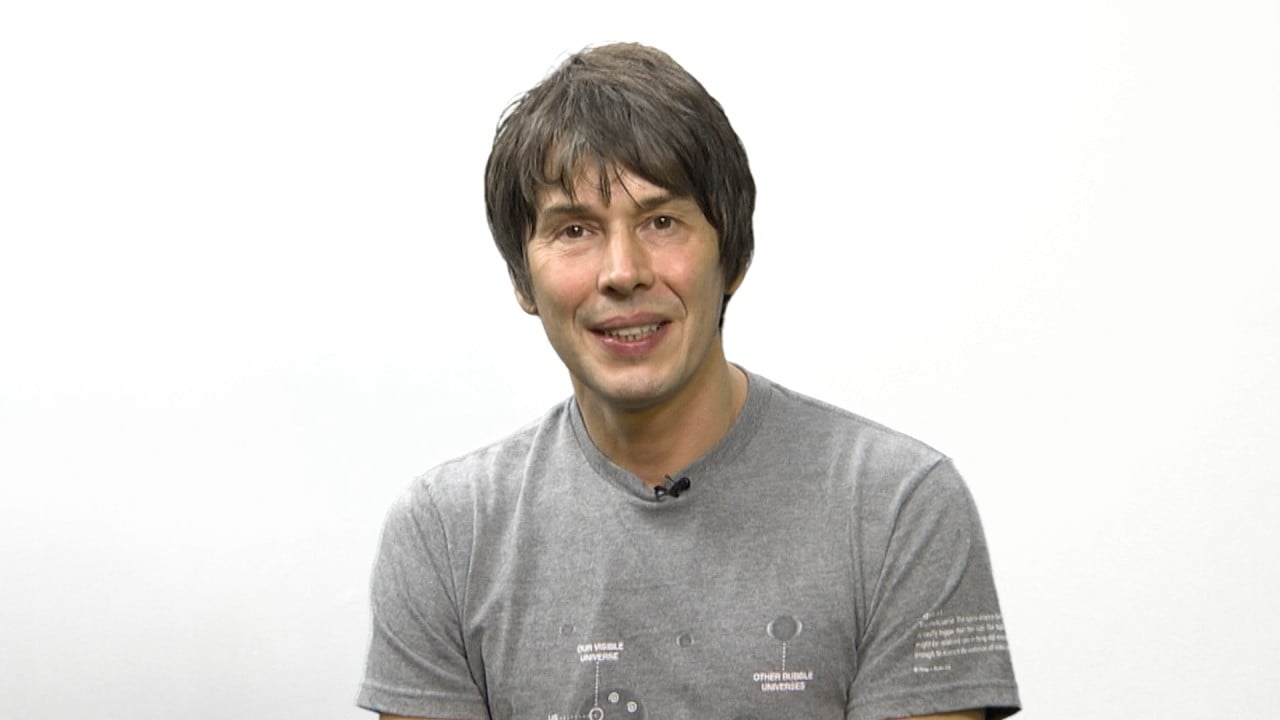
A rare form of quartz is key to Xinjiang’s solar boom, and almost all of it is in the US
- The US has cracked down on the Chinese region’s solar industry, citing human rights, but hasn’t tried to leverage its own near monopoly in high-purity quartz
- The raw material is vital to the low-cost mass production of polysilicon, the prime ingredient in solar panels
Despite tariffs, rising production costs and human rights sanctions, it pumps out almost half of the world’s polysilicon, the shiny material that lets solar panels turn sunlight into electricity.
The region has almost everything it needs to do the job as fast and as cheaply as possible, from mines to factories to labour – except for one crucial raw material that exists in just a handful of places on Earth. And almost all of that raw material, industry experts say, happens to be sitting in the United States.
It is called high-purity quartz – a white, undiluted and highly unusual form of quartz, the most abundant rock on the Earth’s surface – and Chinese authorities have said openly that they do not have enough of it to sustain their own industry.

“Quartz resources in China are not optimistic, and there is a lack of high-quality deposits,” a China Securities report said last year. “At present, China’s high-purity quartz sand is still heavily dependent on imports, but the future of localisation is promising.”
The US controls an overwhelming majority of the global supply, experts say.
There are other slower, more expensive ways to make polysilicon – the key ingredient in solar panels – but experts say this quartz, combined with cutting-edge engineering methods, allows companies to mass produce it with high efficiency and lower costs.
You can’t claim to control the supply chain if you’re not focused on the early part
“The US Department of Energy has expressed little interest in this aspect of the problem in recent years,” said B. Erik Ydstie, an emeritus professor in the chemical engineering department at Carnegie Mellon University in Pittsburgh, Pennsylvania.
“Well, you can’t claim to control the supply chain if you’re not focused on the early part,” said Ydstie.
In June, the Biden administration blocked Americans from selling materials to a group of Xinjiang solar companies because of human rights concerns, adding them to the Commerce Department’s “entity list”, but experts say US high-purity quartz sellers may not be subject to the ban.
That is because high-purity quartz is not inserted directly in solar panels. Instead, it plays a crucial supporting role in the manufacturing process, and is used to make a special kind of stone vat, called a crucible, that is vital to the production of polysilicon.
US ban on Xinjiang solar products heaps pressure on supply chains
Olga Torres, managing member of Torres Law, a firm that specialises in trade and national security, said it was unlikely that high-purity quartz sales from the US violated any export control rules in place under current law.
But she added: “Whether it is illegal from a pure export law perspective also neglects that the public is nowadays more active than before, and they expect US companies to know how their products may be used down the line and by whom.”
In the high-purity quartz crucible, the ingredients for polysilicon are heated to soaring temperatures for months on end. The crucible serves as a kind of oven, replenished continuously, from which long rods of polysilicon are spewed back out, until the crucible eventually melts down. And then the process is repeated.

Experts say that with this efficient and hi-tech production process – known as the continuous Czochralski method and considered a vast improvement over an older, slower manufacturing technique – the crucible needs to be built with the purest possible quartz, or else its impurities will leach into the polysilicon.
That is what makes the few high-purity quartz deposits scattered around the world so valuable.
And it is a major reason why China and the rest of the world all have their eyes on the Spruce Pines mine in North Carolina, where two companies — US-based Covia, formerly known as Unimin, a subsidiary of Belgium’s Sibelco; and The Quartz Corp, based in Norway — dig high-purity quartz out of the ground and help keep the modern solar supply chain moving.
“The global industry of high-purity quartz is currently dominated by a handful of companies that own the entire supply chain, from mining all the way to high-end downstream processing,” said a document published by the Department of Natural Resources of China’s Hebei province in 2020.
“Unimin’s quartz sand has an absolute monopoly on the global market share of high-purity quartz sand,” it added.
Can US go big on wind power without turbines from Xinjiang?
Experts say Unimin and The Quartz Corp’s mines produce about 80 to 90 per cent of the global supply of high-purity quartz.
“That’s where this mountain in North Carolina is so important,” said John Holder, an engineer who helped develop the continuous Czochralski process for making polysilicon and is now an independent consultant. “Just almost practically miraculous that it can be made that pure, for fairly low dollars.”
“It’s a gold mine,” Holder said.
The intellectual property for the continuous Czochralski process, once owned by the US company SunEdison, was acquired in 2016 by the Chinese solar giant GCL-Poly Energy Holdings, whose Xinjiang branch Xinjiang GCL New Energy Material Technology Co was sanctioned by the US in June over human rights concerns.
GCL-Poly said in a company filing at the time that acquiring SunEdison’s proprietary technology would “substantially improve” the efficiency and quality of its polysilicon production, and “further consolidate” the company’s status as a global leader in the industry.
“That’s an amazing process,” Holder said. “You can make some cheap silicon. But in order for that to work, you’ve got to have the best crucible man can make, with the lowest impurities man can make.”
The companies mining the high-purity quartz in North Carolina say they do not violate any laws because they don’t sell the rare resource directly to sanctioned firms in Xinjiang.
“Sibelco’s customers in China produce consumables equipment that are used in the production of components of photovoltaic systems,” a company spokesman said. “Sibelco’s quartz materials are therefore not used in the photovoltaic systems themselves.”
A spokeswoman for The Quartz Corp called China “an important market”.
Xinjiang companies blacklisted by US seen ‘shifting orders within China’
“We have built strong relationships with our customers over the last 10 years, and we believe these are reputable and serious companies, with whom we intend to continue to work with in the long term.”
China can make its own crucibles, but it produces only 15 per cent of the high-purity quartz sand it needs to do so – a missing link in its otherwise self-sufficient supply chain for solar panels.

The biggest Chinese high-purity quartz producer is Jiangsu Pacific Quartz, which experts say is the only Chinese company that is capable of mass production. Founded in 1992 and listed on the Shanghai Stock Exchange, the Lianyungang-based firm produces a wide variety of quartz products. It does not rely heavily on the United States, according to a company filing.
“We cannot rule out … the adverse impact on our operating results caused by the impact on the purchase and export prices of our major raw materials due to tariff increases,” the company said in 2020.
Jiangsu Pacific is expanding its capacity of high-purity quartz, aiming for 20,000 tonnes per year – 5,000 tonnes more than its current capacity – which is supposed to be completed by the end of this year, according to the company. By contrast, the mines in North Carolina produce an estimated 180,000 to 200,000 tonnes per year.
US ban on Xinjiang solar goods: future looks bright for China’s renewables
Experts noted the irony that a rock that can be found literally anywhere – or at least an ultra-pure form of it – has taken on the coveted status of rare earth metals and other vital resources used in the world’s critical supply chains.
“Quartz is everywhere, but high purity quartz is rare,” said Reiner Haus, managing director of Dorfner Anzaplan, a service company in strategic minerals and metals based in Germany.
He added that synthetic quartz is an alternative to high-purity quartz, but it is more complicated and more expensive, and there are only a few producers of synthetic quartz in Japan and Europe.
Regular, less-pure quartz rock, which is the most abundant mineral on the surface of the Earth, can also be refined to higher purity levels using various techniques – but experts say the costs for that are high too, and would ultimately make solar panels more expensive.

01:43
Scientist Brian Cox says climate change formula must include society and politics
“Quartz is common, but most quartz has got impurity in there, and it’s difficult to remove the impurity. That’s the challenge for the producers,” said Murray Lines, the founding director of Stratum Resources Consulting Group, an independent minerals consultancy company based in Australia.
“If you look at a triangle of the pricing, then the top little tip of the price is quite high, maybe 12,000 US dollars a tonne. When you get to the bottom of that triangle, the material is quite inexpensive, maybe only 250 or 500 US dollars a tonne,” he said.
“You know China is catching up,” he added. “There’s no doubt about that. I think if we were holding this conversation in five years, we may possibly find the imports from the US be only a quarter of what they are at the moment, and then the rest will be made locally.”
But other experts caution that without a mountain filled to the brim with rare, white, high-purity quartz, it may be difficult to compete with the huge and highly valuable deposits already being mined in North Carolina and then sold overseas.
“On some of the companies’ websites that produce quartz in the world, they talk about how they’ve invested millions upon millions of dollars into technologies to research and develop better processes for getting higher-purity quartz,” said Robert Goodin, a mineral commodity specialist at the US Geological Survey.
“But there’s only so much that you can do with a lower-quality product.”


